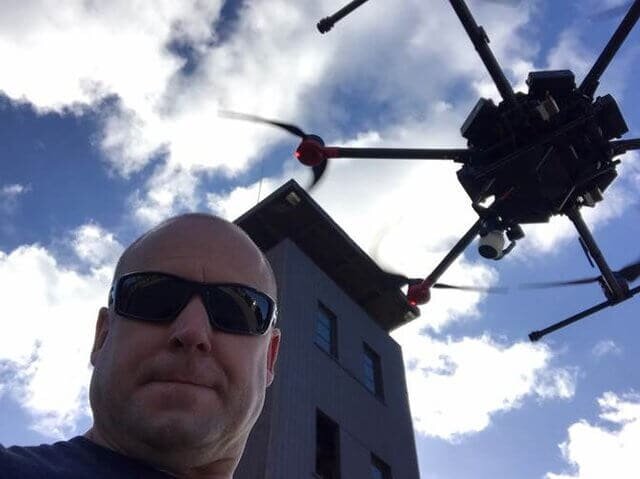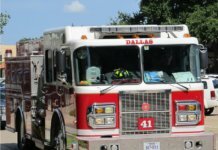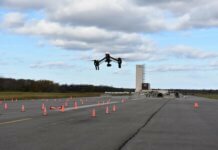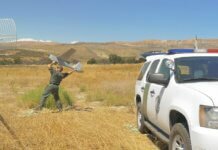California Task Force 3’s (CA-TF3) Water Rescue Team, one of 28 Federal Emergency Management Agency (FEMA) National Rescue Response Teams, is sharing the work it completed last Thursday using drones in the aftermath of Hurricane Harvey.
The 16 Water Rescue Team members deployed came from the Menlo Park Fire District, which sponsors the task force, as well as from Central San Mateo County (Burlingame, Hillsborough and Millbrae), Palo Alto, San Jose, San Mateo and South San Francisco fire departments.
Responding from a staging area in Katy, Texas, last Thursday morning, the Bay Area’s Water Rescue Team headed to the City of Wharton, where the Colorado River had started to overbank around 3 a.m. on Thursday and was reportedly flooding the city and surrounding areas.
Notably, while on the way, a team member noticed a dog struggling in three feet of water near the town of Hungerford, so the convoy of four trucks, two enclosed boat trailers and a suburban command vehicle quickly pulled over, rescued the animal and then raced to Wharton.
The team was first tasked with conducting search-and-rescue (SAR) operations in the rural and muddy waters of the agricultural lands that surround Wharton. Captain Tony Eggimann quickly prepared one of the team’s three drones to scout out several miles of area from the air as the boat crews prepared six boats. He determined clear routes of travel, as well as the exact locations of farms and buildings, so that they could expedite the search and not waste any time – something the veteran Hurricane Katrina responder was more than familiar with, CA-TF3 notes.
Only a week ago, Eggimann had been flying drones over a forest fire at night in Yosemite National Park. Under clear skies and 1,750 miles away from Yosemite, he again quickly and efficiently guided a DJI Mavic Pro drone up to an altitude of 200 feet and flew a reconnaissance 360-degree ring around the area. He was able to note where the flooding started and ended, located navigational landmarks and potential hazards, and counted 30 structures located on several farms that would require contact by the boat crews from Task Force 3.
He quickly downloaded several pictures and a video to his waterproof iPad and jumped into one of the awaiting boats. According to the task force, the situational awareness the captain gained from the drone flights helped him quickly and directly navigate to specific farms and buildings. Though no one was found, the team placed a search marker on each of the buildings and wasted little time conducting the operation.
Eggimann is a founding member and one of five certified drone pilots within the Menlo Park Fire District’s drone program. The fire district is one of only a few public safety agencies nationwide that are authorized to fly drones across the country during the day or night, the task force says.
Fire Chief Schapelhouman says, “Drones are a game-changer for first responders; what Captain Eggimann did [last week] is yet again another example of why every fire and rescue agency in this country, let alone all of the FEMA rescue teams in the nation, needs to be provided with these incredible tools.”











1
Leave a Comment
That picture shows just what you do not want to do with a drone: Fly 6 engines at 10,000 rpm a few feet over someone’s head! Funny they should choose that one.